The summer of 2018 has been an eventful one for Real Madrid.
Cristiano Ronaldo finally departed the Spanish capital for a new challenge at Juventus, and Florentino Perez surprisingly decided against dipping into his chequebook to replace the five-time Ballon d’Or winner, while earlier in the year, Zinedine Zidane also decided to leave Real after leading them to three Champions League wins in a row.
Few would have predicted the chain of events as they occurred, as Perez picked Julen Lopetegui, the manager of the Spanish national team as Zidane’s replacement.
If that alone was a surprising choice, the manner in which his appointment was announced threw Spain’s World Cup into disarray, with the president of the Spanish football federation, Luis Rubiales only informed of this decision five minutes before Madrid made it public, just two days before Spain’s opening World Cup game.
Rubiales was forced to sack Lopetegui for his perceived unprofessionalism, leading to Fernando Hierro taking temporary charge of the team for the World Cup, while Lopetegui said that his sacking was the ‘saddest day’ of his life.
Memories in football are notoriously short, however, and much of this has already been forgotten as the new season has commenced. Lopetegui has had to rejig the team to account for Ronaldo’s departure, and while there has not been a radical shift in tactics from the Zidane era, it is useful to compare Lopetegui’s Madrid side with his time in charge of Spain.
Lopetegui, like most modern managers, tweaks his approach based on the players at his disposal, and while there are several familiar faces at Madrid, the difference in approach between the two sides is notable enough to warrant discussion.
Madrid began the season with a 4-2 defeat at the hands of city rivals Atletico Madrid in the European Super Cup, but have since picked up three wins out of their first three league fixtures, against Getafe, Girona and Leganes.
We shall now look at Los Blancos‘ approach in these games, and how it differed from the tactics employed by Lopetegui while in charge of Spain.
Attacking build-up
Lopetegui has been lucky to be able to call on some of the best players in the world during his time in charge of both sides, especially in midfield, and this is evident from the sides’ approach under him. His first few games in charge of Madrid have seen him use a couple of systems; either a 4-2-3-1 or a 4-3-3, but with similar characteristics across the two formations. One player, usually Casemiro, is the holding player, tasked with protecting the space in front of the defence and recycling possession, while his partner in midfield is the deep-lying playmaker, controlling the tempo of the game. This role has been reserved for Toni Kroos, and the German has been excellent, playing the full 90 minutes in all three league fixtures and averaging 111 passes per game, with a stunning 96.6% success rate. Kroos’ touch map from the 4-1 win over Leganes illustrates his influence on Madrid’s approach, while Casemiro’s touch map shows the defensive role he is expected to play –
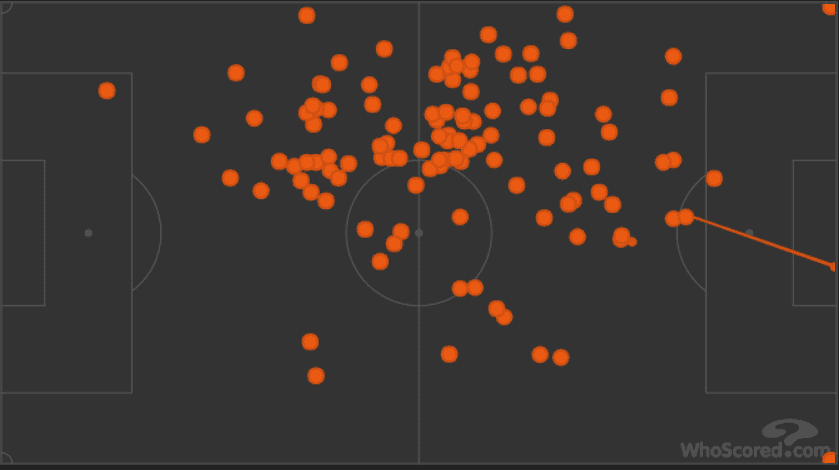
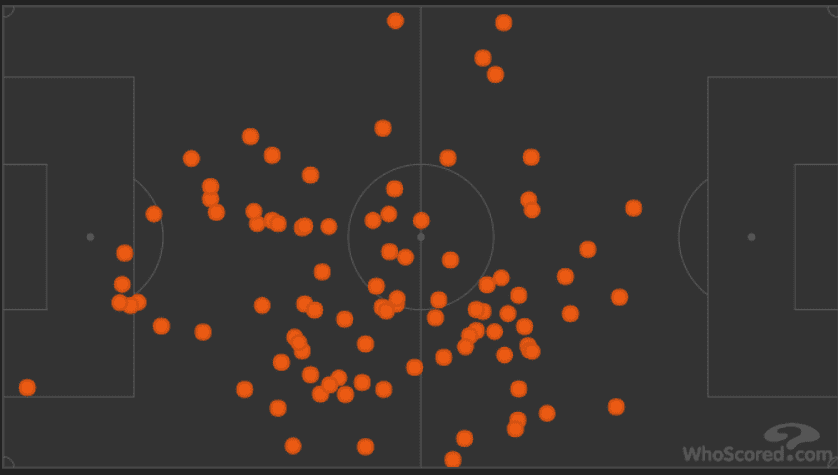
This is similar to the way Spain were sent out under Lopetegui, with Sergio Busquets/Koke and Thiago Alcantara forming the midfield pivot. The key difference here is that Casemiro is far more defensive-minded than either Koke or Busquets, while Thiago could do the job that Kroos does for Madrid, although the German is probably the best in the world at it. A look at Spain’s system against Tunisia and Koke’s touch map against Germany confirms this –

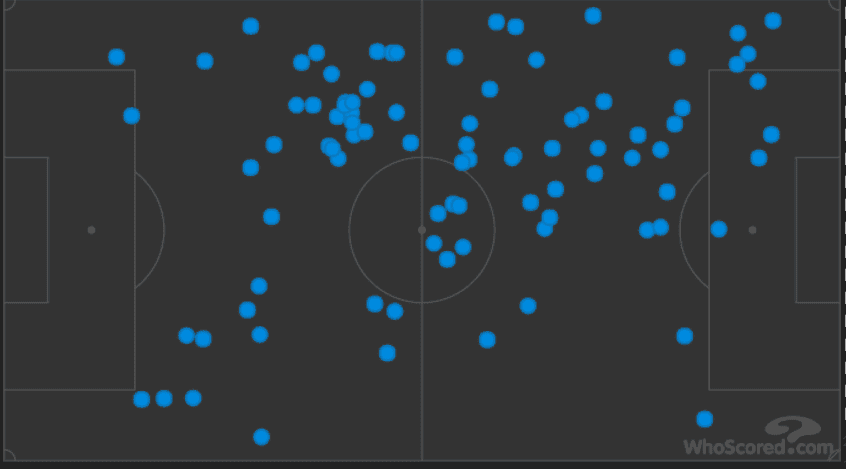
The role of Isco
In Lopetegui’s systems, the third midfielder is the one tasked with getting forward to support attacking moves, whether from a deeper position in the 4-3-3 or as the advanced playmaker in the 4-2-3-1. Luka Modric’s World Cup exertions have meant that he has been eased into the Madrid side, making his first start of the season in their most recent league game. In his absence, this role has been taken up by Lopetegui favourite Isco. The Spaniard was a key part of Lopetegui’s Spain side, and looks like being a cornerstone of his tenure at Madrid as well. Regardless of whether Isco or Modric start, their role is clear; drift across the pitch to link up with the wide players and full-backs, while looking to supply the killer pass into the box. Their touch maps from the games against Girona and Leganes demonstrate this perfectly –
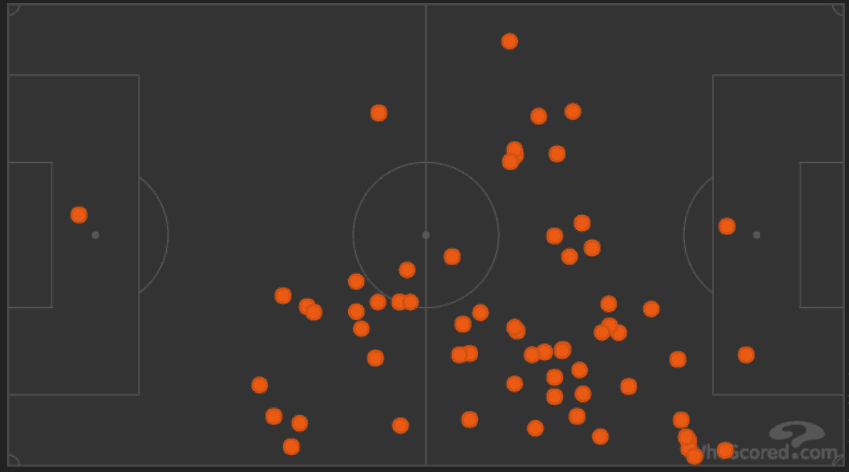
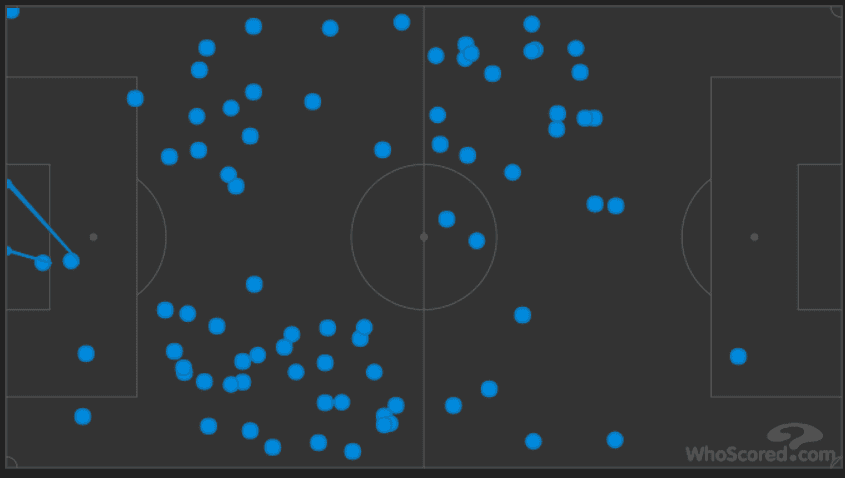
Lopetegui’s Spain side played in a similar fashion, looking to advance quickly up the field with rapid passing moves. Isco was an important part of this approach, drifting to either flank before utilising his superb dribbling skills to get away from opposition defenders. His touch map from a friendly against Germany in March is extremely similar to the one shown above –
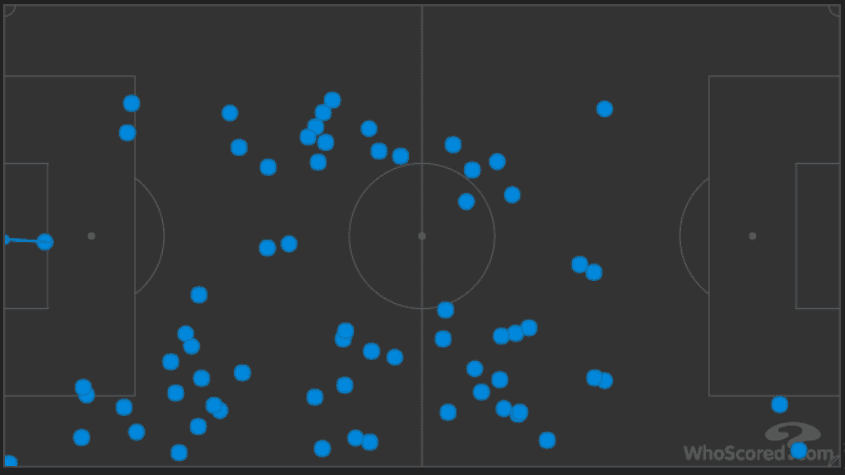
Use of width
Teams which tend to dominate possession usually utilise the full width of the pitch in order to make their opponents defend a larger area, and consequently open up spaces in their defensive lines. For example, under Pep Guardiola, Manchester City used Leroy Sane and Raheem Sterling as wingers tasked with literally hugging the touchline in order to draw defenders out, before accelerating into the vacant space between centre-back and full-back. Lopetegui’s history as manager of Spain’s age-group and senior sides means that he espouses a similar approach. Madrid’s first three games have seen Gareth Bale and Marco Asensio deployed as the wingers, and they generally stay very wide, looking to stretch the opposition before driving inside to create goalscoring opportunities. This can be seen from the touch maps and images below –
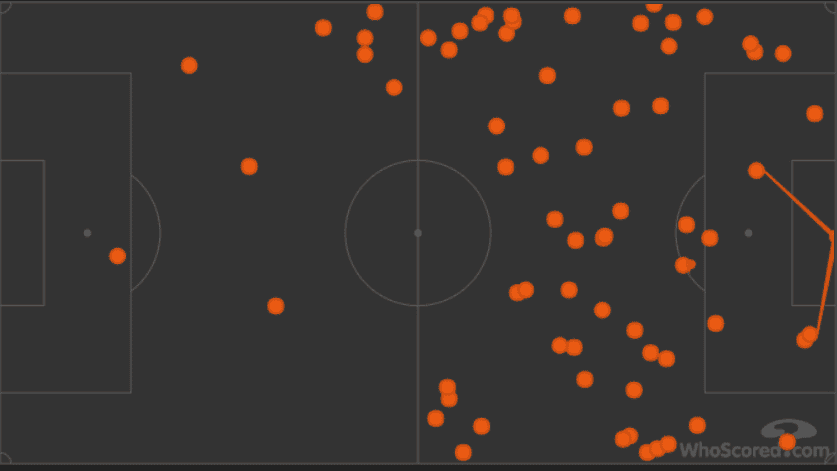
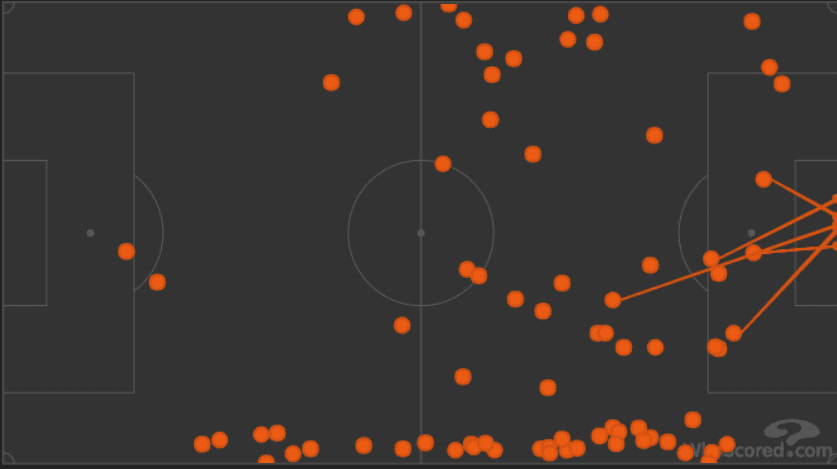
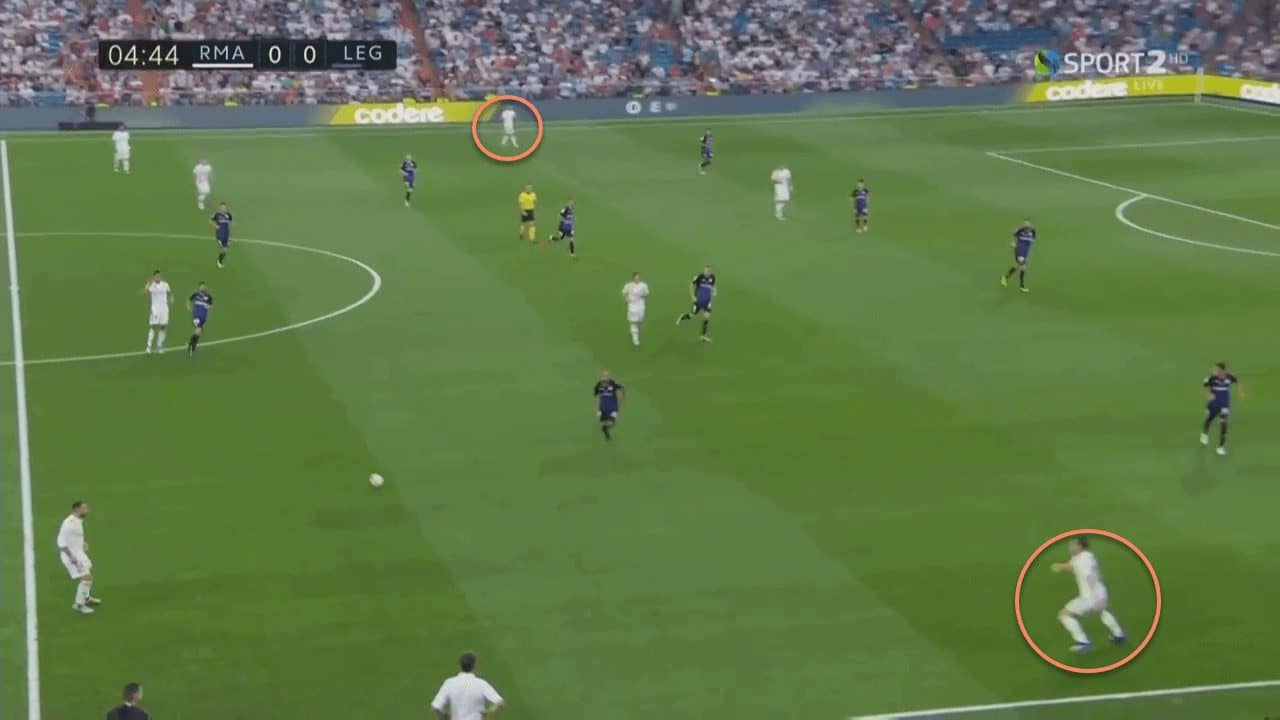
Madrid also have two extremely attacking full-backs in Marcelo and Dani Carvajal, which allows Lopetegui to instruct his wide players to tuck inside if needed as well, safe in the knowledge that the full-backs will provide the width. Their touch map from the Leganes game looks like that of wing-backs, and that is essentially the role they play in this Madrid side –
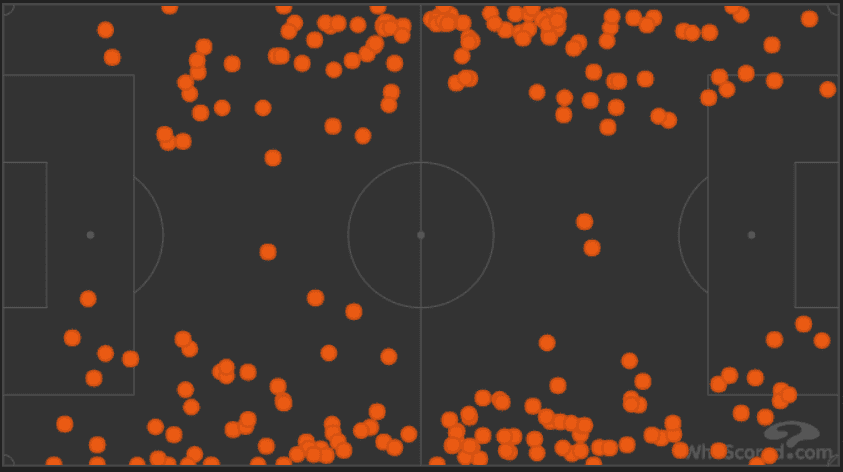
However, it was a different story with the Spanish national side. Spain’s recent success has been built on playmakers, with the likes of Xavi, Iniesta, David Silva, Juan Mata, Santi Cazorla and Isco all having had important roles in the evolution of the side. There has also been a lack of natural wide players, with Jesus Navas and Pedro the only examples of wingers to have played a decent number of games for Spain in recent years. This was reflected in Lopetegui’s approach as manager; one would often see Iniesta, Silva and Isco all start together, meaning that width would have to be provided by the full-backs. Once again, this can be seen from their touch map against Germany –
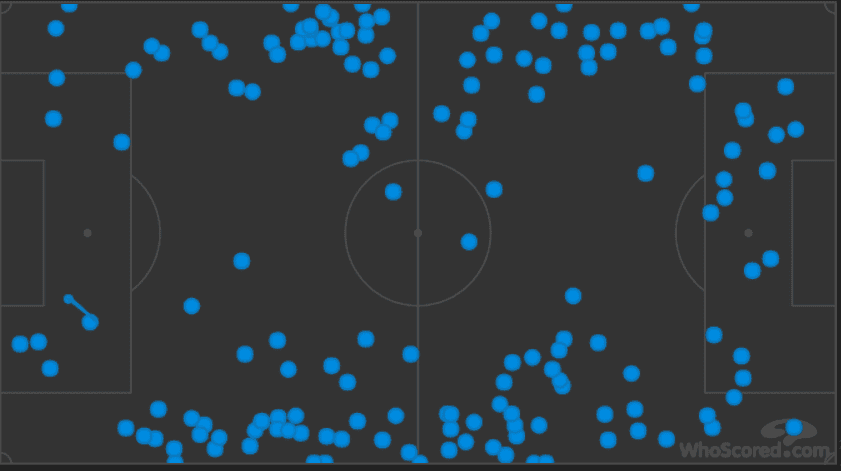
Isco’s intelligence was a vital factor in making this system work. He would often drift out to the left flank, holding a wide position in order to create space for the likes of Iniesta and Silva to work their magic. An example of this can be seen below –
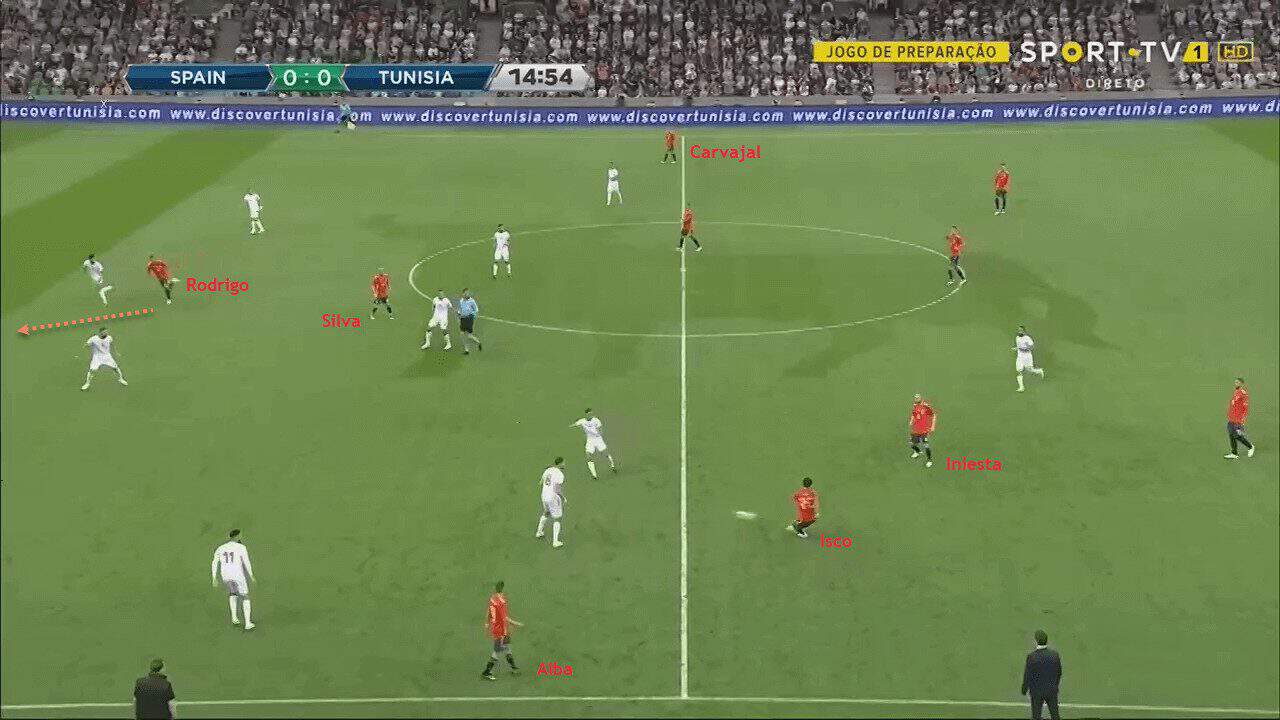
The striker
Karim Benzema has faced vociferous criticism throughout his Madrid career for a perceived lack of goalscoring contribution. The Frenchman has been linked with an exit almost every summer for the past five years, but has become an essential part of the Los Blancos side. Those who decry his continued presence in Madrid fail to see the role he plays in knitting attacks together. Benzema is not a typical number 9; he is unselfish and looks to create opportunities for teammates by dropping deep and wide and allowing the likes of Ronaldo and Bale to get into goalscoring positions. This has been recognized by Lopetegui, who has used Benzema almost as a false 9 this season. The Frenchman has started the season in brilliant form, scoring five goals from just four appearances, but it his work off the ball that is notable. The following images will make this clear; Benzema is vital to Madrid’s approach in attack –
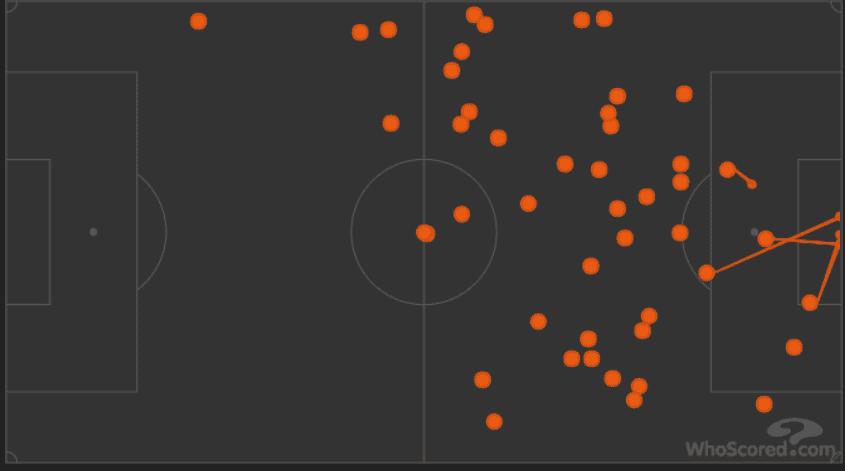
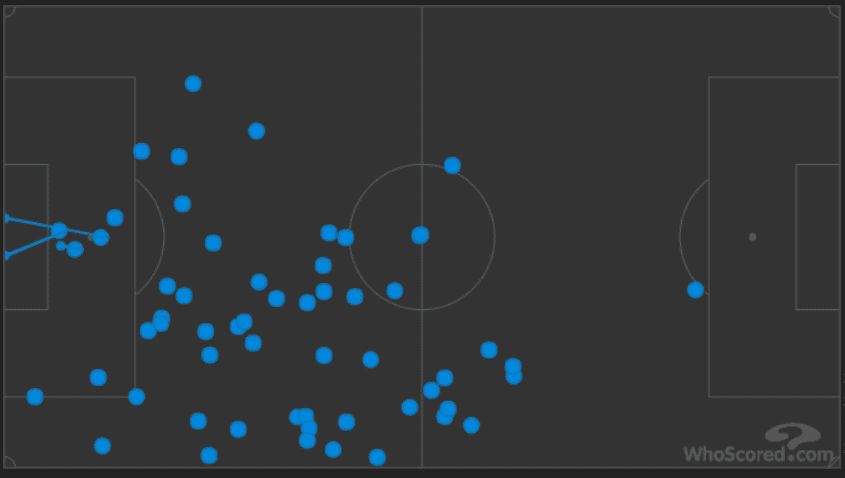
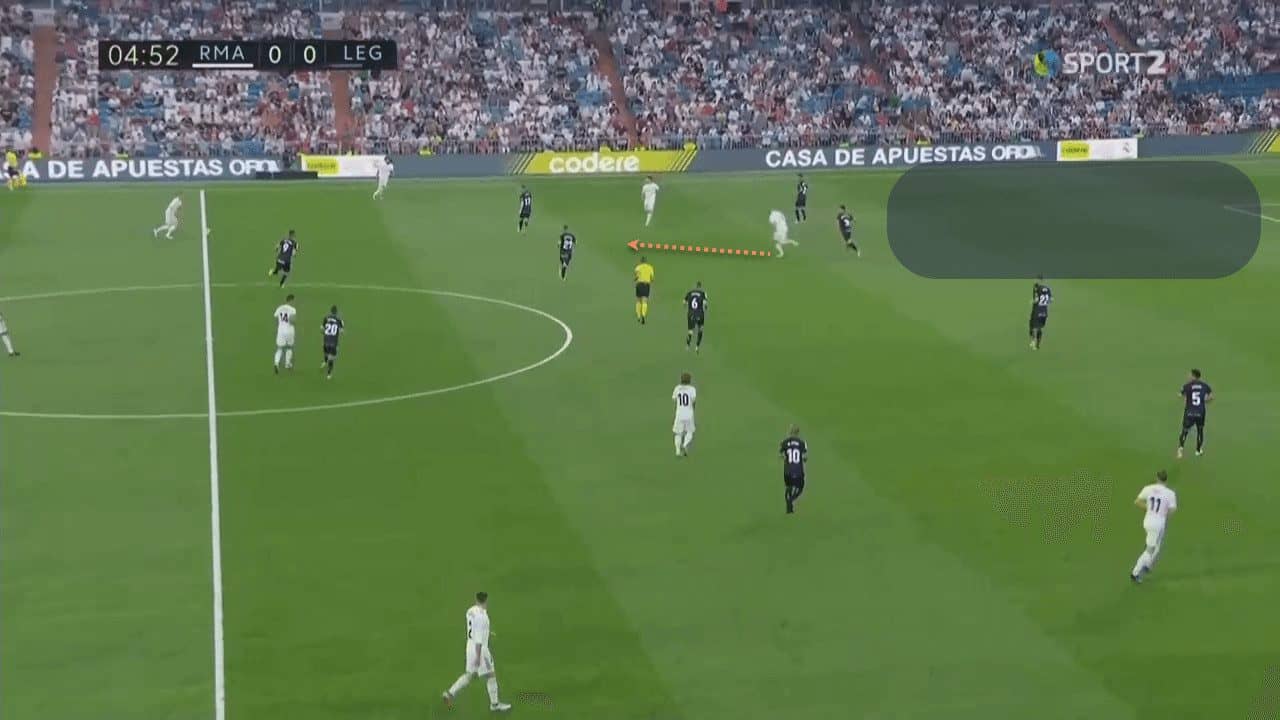
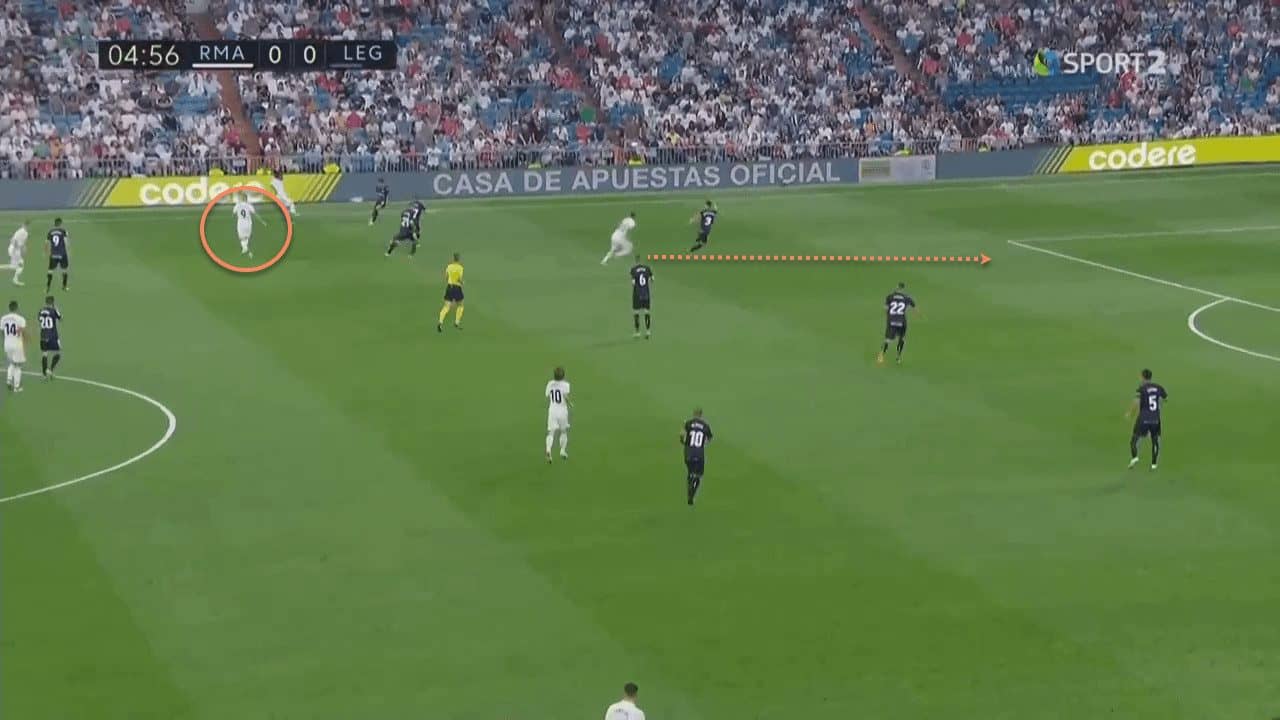
Lopetegui had a very different type of striker available to him while in charge of Spain. Diego Costa is the complete opposite to Benzema, looking to run the channels and play on the defender’s shoulder. However, Lopetegui often used Iago Aspas and Rodrigo Moreno in that role; both players are accustomed to dropping deep and linking play in a similar fashion to Benzema. An illustrative example is from the friendly against Germany in March, where Rodrigo started the game and actually scored Spain’s goal; his touch map shows his willingness to drop and link with the midfielders –
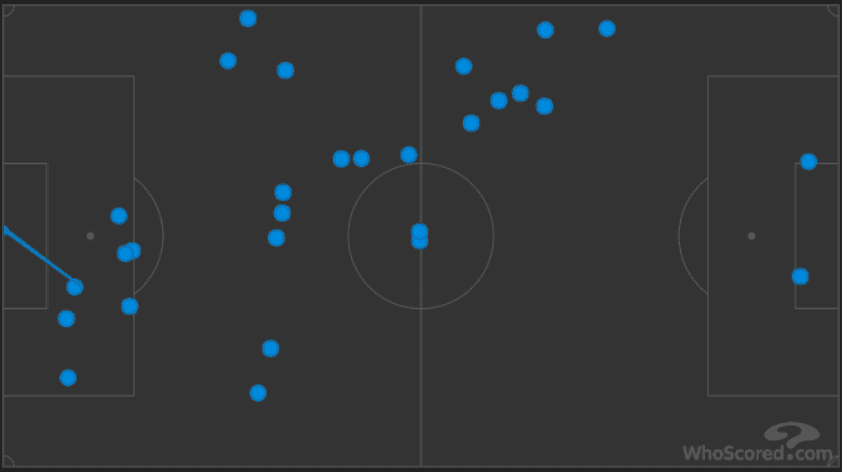
Lopetegui has had two very different profiles of strikers available to him at Spain and Real Madrid, but his preference for one over the other is clear.
Defending
One of the most basic tenets of playing a possession-based system is that the side must also press in some form, while also playing with a high defensive line. Lopetegui’s style of play is inclusive of this as well, and while he is not a priest of high-pressing a la Jurgen Klopp, his sides do employ a targeted press in the opposition half. Once again, the different type of players available to him meant that there are subtle differences in approach between his Spain and Madrid sides, but the basic philosophy remains the same – to deny the opposition the opportunity to play out from the back.
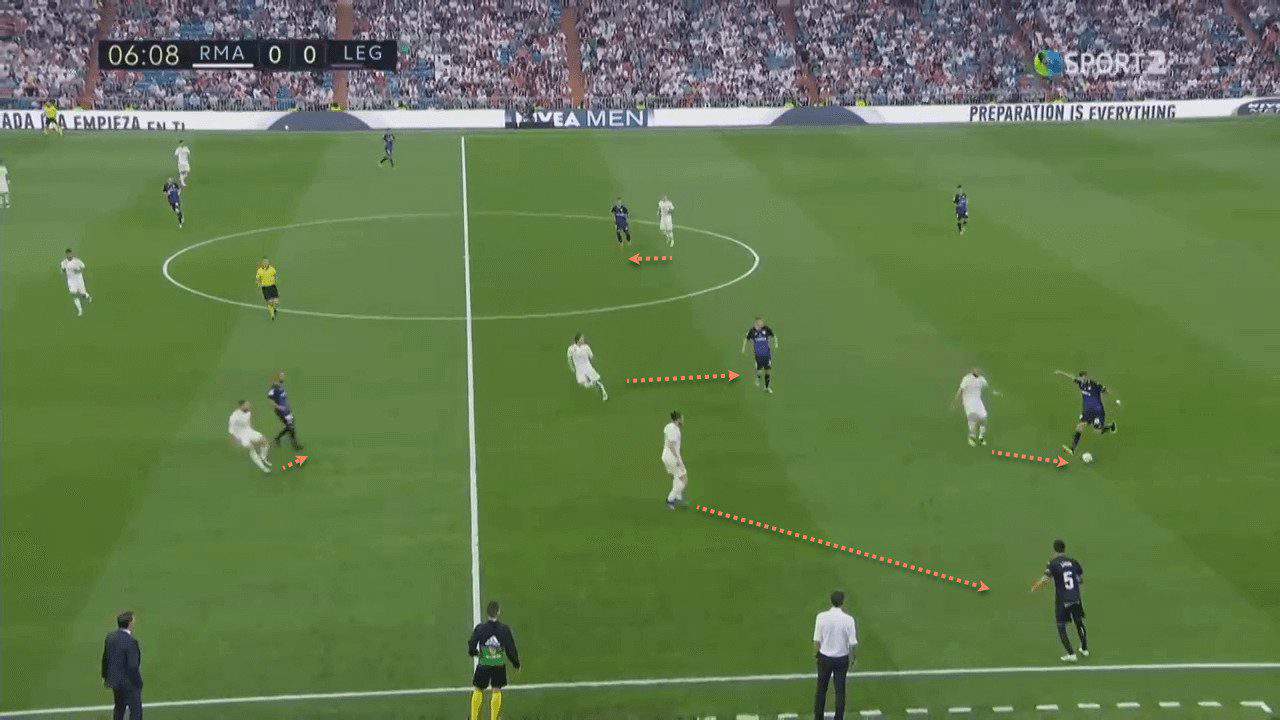
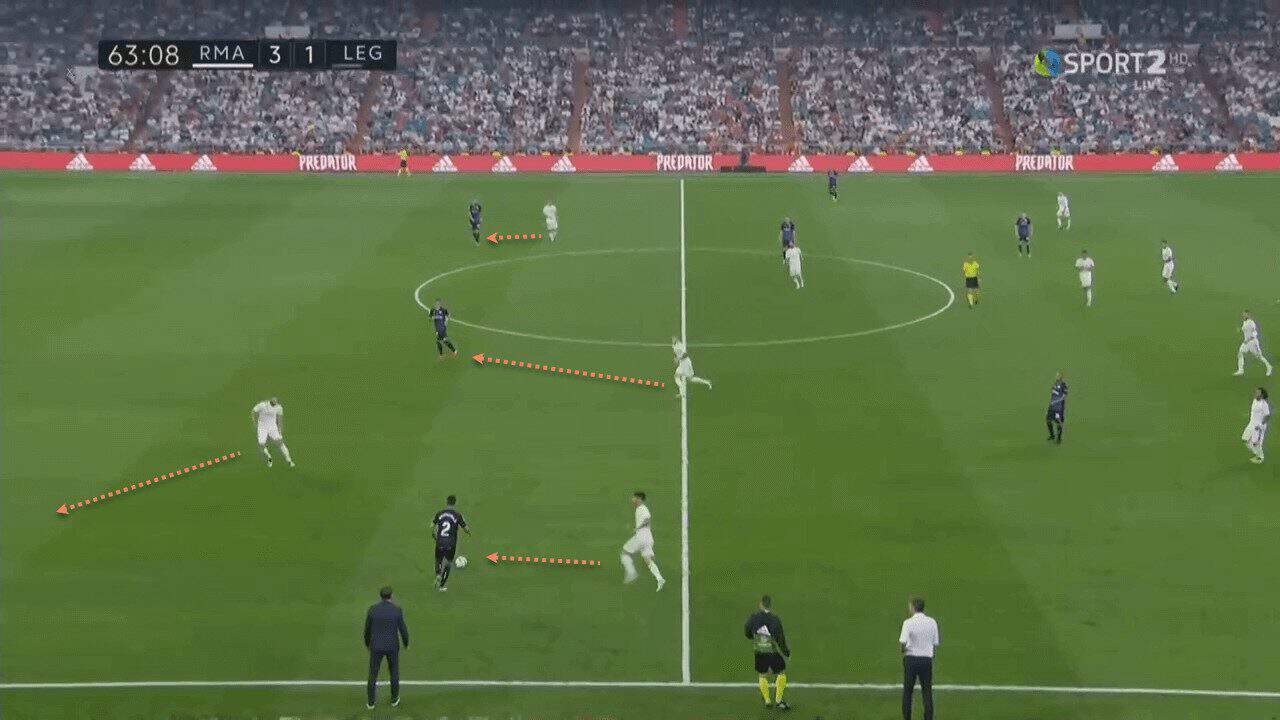
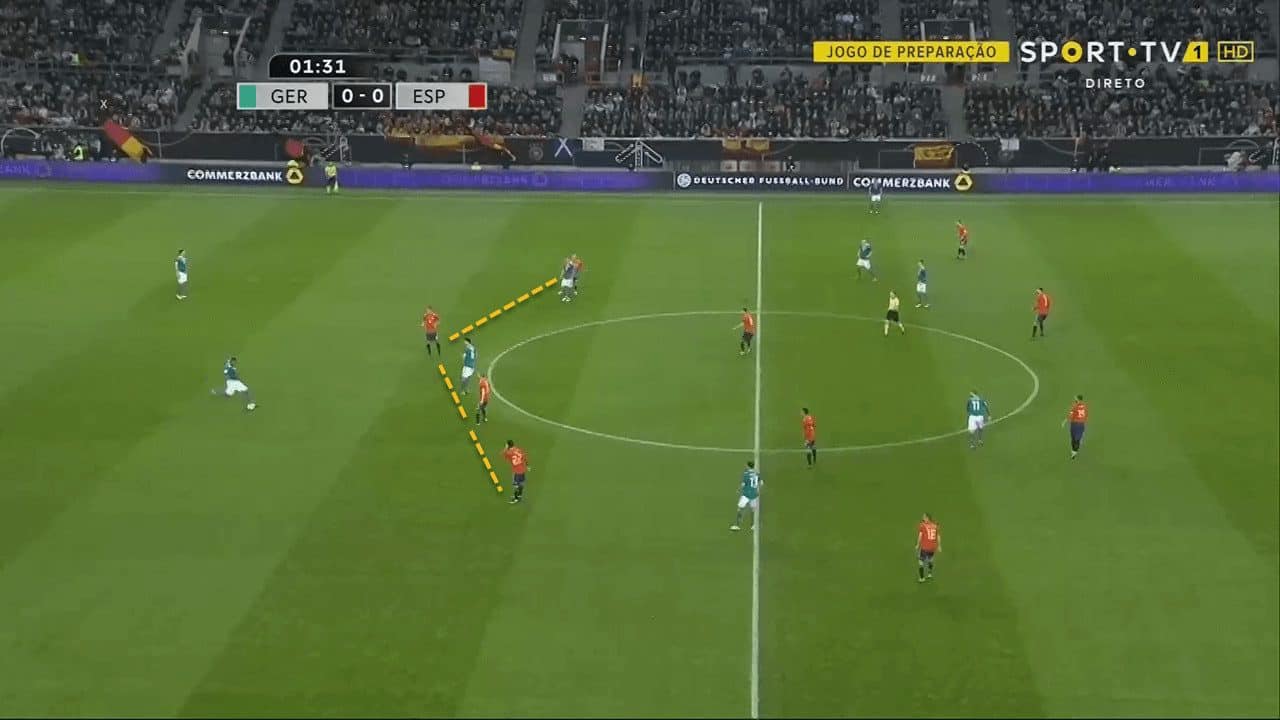
Conclusion
Julen Lopetegui was a surprise appointment at the Bernabeu; in fact, most bookmakers did not even have his name on lists of potential replacements for Zidane. Nevertheless, the erstwhile Spain manager has started well in Madrid and has also brought a defined approach from his time with La Roja, with the tweaks and changes that are to be expected from any good tactician. It will be extremely interesting to see how Los Blancos progress tactically this season, and if there are further similarities between the approaches for the two sides.

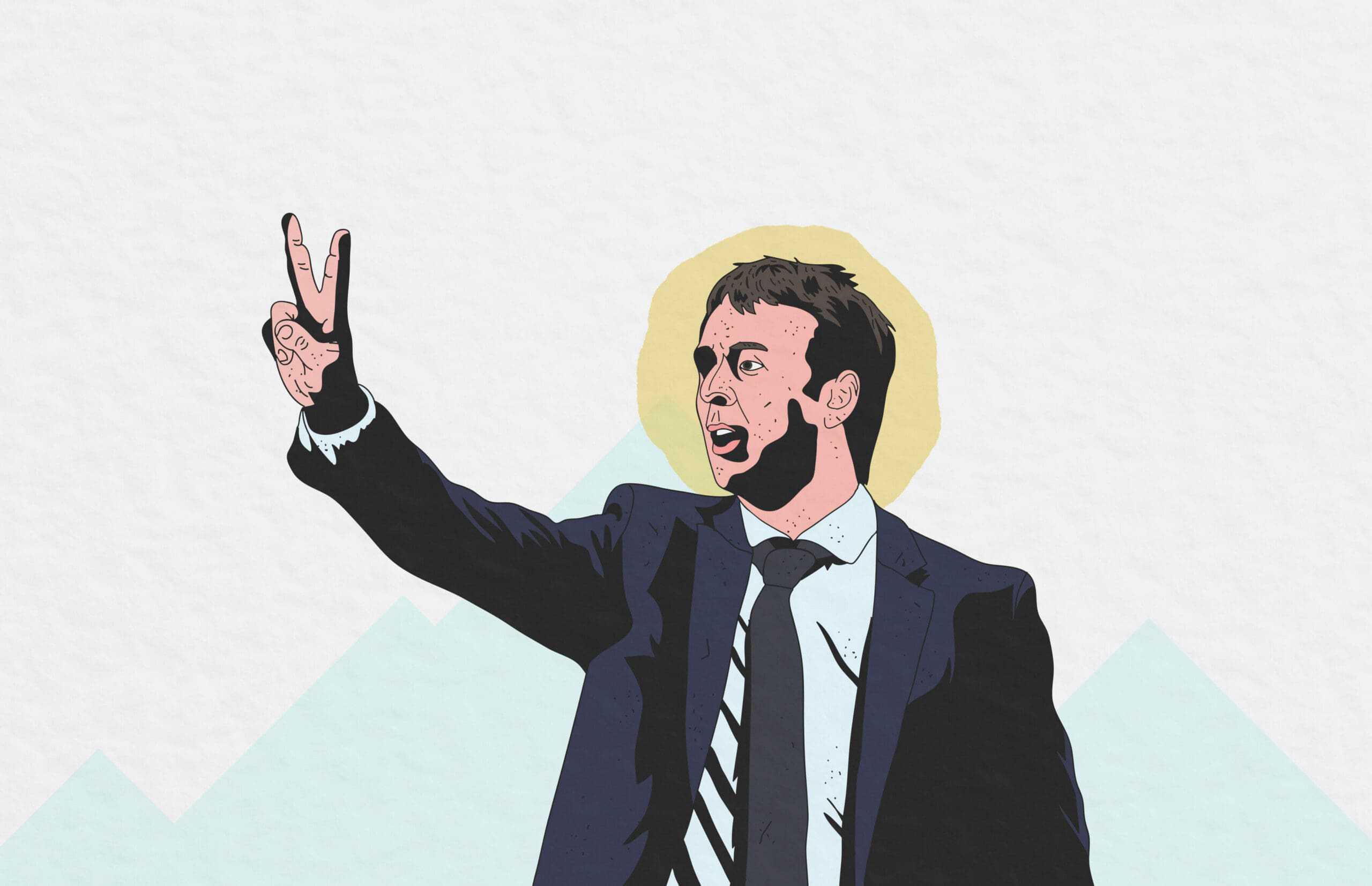



Comments